(continued from previous post)
5-6th November
The Arashiyama Monkey Park Iwatayama was my next destination, so I had my first-ever ride in a Japanese “bullet train” to Kyoto, from where I switched to a local train to the very pretty region of Arashiyama, with mountains, forests, river, and little winding streets with lovely gardens in some of the houses.


A half-hour steep walk through the forest next morning (the first part is the worst) brought me to the Monkey Park.
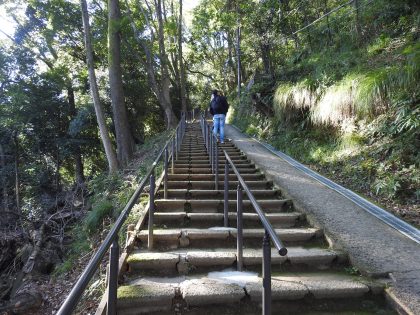
En route were instructions on behaviour around the monkeys, various kinds of information, and a “monkey quiz” in both English and Japanese.
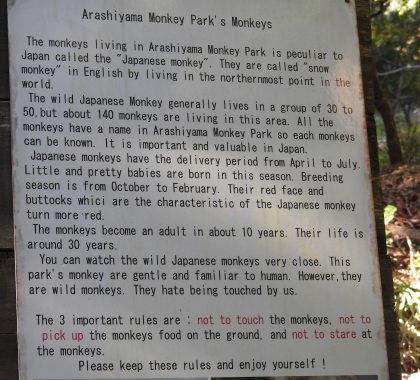
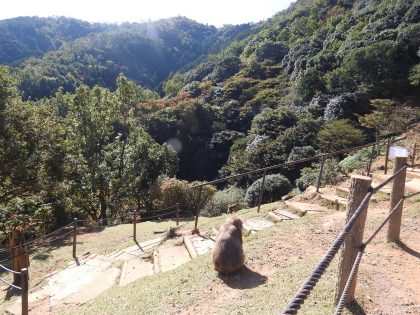
Monkeys are not captive here, but spend most of their time in the forest: the only cage is for humans who wish to feed the monkeys. The monkeys seem to have learned that they only get food from this “cage”, not from other tourists wandering around outside, so they don’t approach or beg for food.
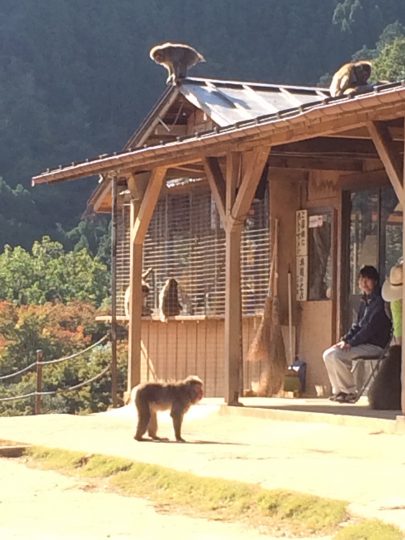
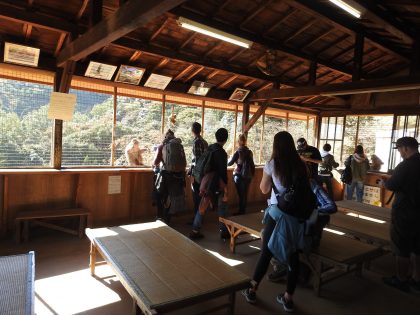
There were many Japanese visitors but also many westerners, pointing to the international appeal of this park.
Many people ignored the signs asking the to put the food on the shelf, not to hand it monkeys directly to the monkeys.
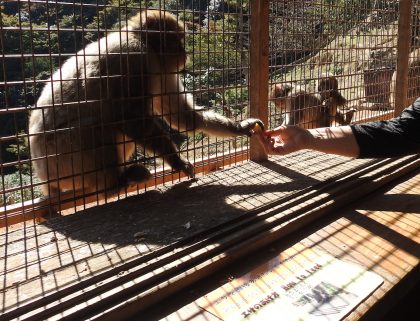
Guides didn’t seem to remind people of this, although they did remind them not to get close to monkeys when taking photos with their phones, and sometimes gently encouraged monkeys away from people. The monkeys generally seems to ignore people outside the “cage”, just strolling casually by and almost never making eye contact. Even those begging food from people inside the cage seemed to only stare at the food and regard the hand as some kind of automatic dispensing machine rather than being part of a living creature to communicate with.
At certain times of day the staff feed the monkeys on the outside. The food mostly seemed to include peanuts, apple and sweet potato.

Although I don’t usually condone feeding wildlife in the wild, this facility seems well managed, apparently promote good feeling by people towards the monkeys, includes some educational content, and the monkeys are free to leave at any time. Potential problems that have been mentioned in the literature however include (1) monkeys may alter their normal behaviour and no longer be truly wild animals, (2) if supplementary feeding increases the population of monkeys beyond what the forest can cope with they ay spread into suburbs and crops and cause human-wildlife conflicts and (3) by altering their daily activities, monkeys that would normally act as dispersers of native seeds are now either not eating those fruits or are dispersing many of the seeds around the visitor centre where they are unlikely to germinate. Possibly these issues should be the subject of future research.
My main frustration was that none of the guides had a good enough command of English to answer queries about monkey behaviour or ecology or to tell me anything about the research currently being conducted (although they confirmed that yes, there was some research, including mother-infant communication). The educational value could be raised by having at least one bilingual or multilingual guide.
From a tourist point of view, an interesting and very pleasant experience, starting with a walk through a lovely forest (with several very welcome seats along the sometimes steep trail), lots of monkeys and great views of Kyoto
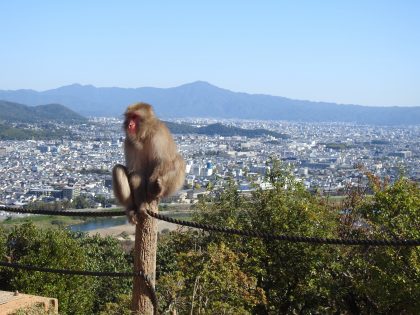
Next was another train ride to Hiroshima, where Rie met me and drove us to the ferry for Rabbit Island.
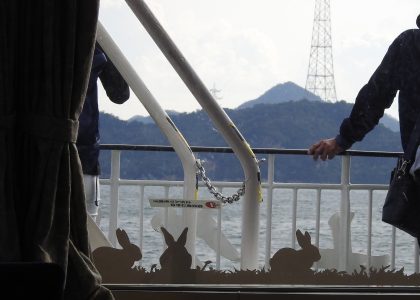
Rabbit Island is a national park, but was once used for testing of poisons as weapons during World War 2. After that was abandoned, a few rabbits were somehow brought to the island, an with no predators (apart from possibly the large-billed crow) they lived up to their reputation for fecundity and now (with possible new inputs of rabbits from time to time) number around one thousand. This is a bit of a problem for national parks. They are not native to the island, and during periods of low visitor usage they eat all green stuff available, not good for the native vegetation and not good for the rabbits subsequently starving. The bringing of food for the rabbits by visitors is not encouraged, and some of the food is not ideal for the rabbits. On the other hand the island has become a major tourist attraction, especially after social media videos of people being covered in rabbits went viral.
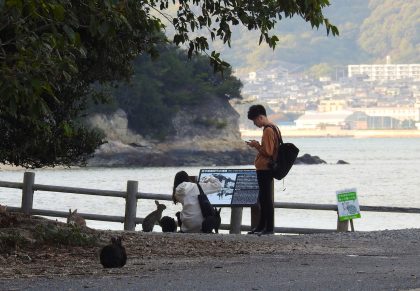
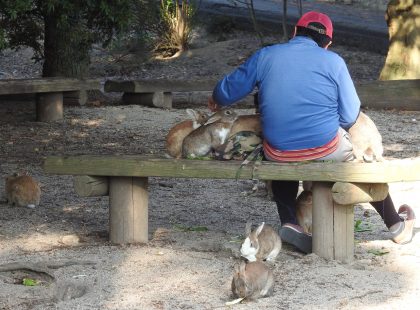
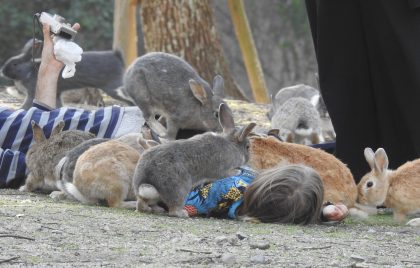
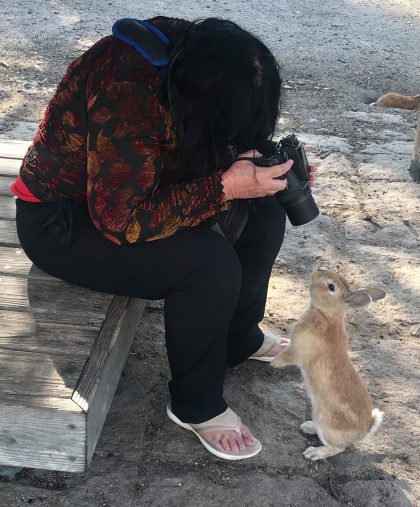
to admit they were cute (photo by Rie).
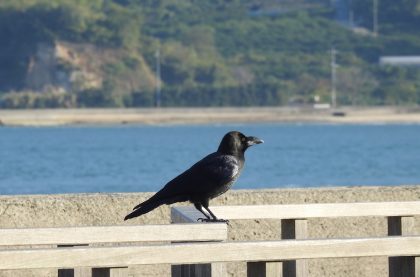
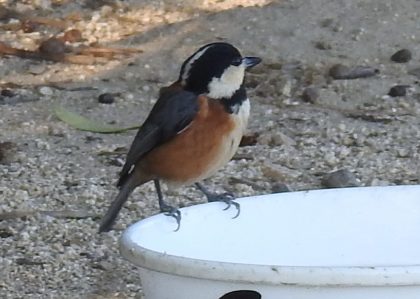
Rie has been studying the situation on Rabbit Island, as well as feeding of semi-tame deer, along with Prof Carolin Funck, and has presented papers at the Wildlife Tourism Australia conferences in Geelong 2015 and Adelaide 2016
to be continued …… sustainable wildlife tourism seminars, an aquarium and another monkey forest)
